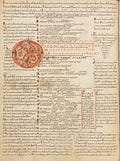We’re still medieval, and it’s a good thing

If Jacques Derrida’s famous dictum that ‘there is no outside text’ may…
Keep reading with a 7-day free trial
Subscribe to Biblonia to keep reading this post and get 7 days of free access to the full post archives.

